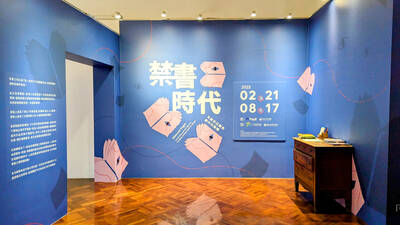For about 1,200 years, the treasure was lying hidden between rocks and coral reefs in the shallow waters of the Gelasa Strait, a passage between the Indonesian islands of Belitung and Bangka.
Then, in 1998, fishermen diving for sea cucumbers stumbled across ceramic bowls embedded in a pile of sand and corals.
They dug a hole, and 17m beneath the ocean surface, and discovered a sunken vessel with more than 60,000 artifacts on board, mostly ceramics from Tang Dynasty China but also unique pieces dating back to the ninth century.
The discovery excited scholars, who viewed it as a proof of a maritime silk road, the watery counterpart of the overland Silk Road, which connected Asia to the Mediterranean.
Eleven years on, the treasure of the Belitung wreck remains hidden from the eyes of the general public.
Most artifacts are kept in a depot in the basement of Singapore’s Hua Song Museum, waiting to possibly become the core of a Maritime Silk Road museum yet to be built in the city-state.
“On board the ship were rare treasures,” said Alvin Chia, executive with the Sentosa Leisure Group, which develops tourist attractions on Singapore’s Sentosa island.
In 2005, the company purchased the ship’s cargo for more than US$32 million, out rivaling bidders like Qatar and Shanghai, after German treasure hunter Tilman Walterfang salvaged the artifacts from the bottom of the sea.
In the entrance hall of the storeroom, Chia explained the most impressive pieces, shown on wall charts.
“Let’s see the real stuff now,” he then said, drawing a
black curtain.
Arranged on 25m-wide steps leading up to the ceiling, rows of jars and bowls fill the vast storeroom, all once packed on board a 20m-long and about 5m-wide Arabic dhow that sank on its way from China to Oman, most scholars believe.
At first, it was the sheer scale of the ceramics, originating from different kilns from all over China, which struck the researchers.
“The quantity of pottery on the ship demonstrates that there was a highly organized production system in China ... a mass production system more highly organized than any known previously,” said John Miksic, an expert on Southeast Asian archeology at Singapore National University.
An inscription on one bowl reads, “the 16th day of the seventh month of the second year of the Baoli reign,” dating it to the year 826 in the latter period of the Tang Dynasty (618 to 907).
It was also the motifs on the pottery that captivated the scholars.
“The artists are kind of crazy,” Chia said, cautiously pulling out one bowl after the other from the racks. “They go around with a lot of patterns.”
Lotuses, dragons, Chinese calligraphy and Buddhist symbols are mixed with geometric decorations from the Muslim world and Islamic scripts praising Allah.
“The fusion of these two cultural worlds,” as Miksic put it, was also represented in the presumably most spectacular object — an octagonal cup, made of solid gold and featuring dancers from Central Asia.
With a weight of 684g and a height of 8.9cm, it is “the largest Tang Dynasty gold cup ever found,” Chia said.
A cargo with the value found aboard the Belitung shipwreck is rare, Miksic said.
“Perhaps a shipment of this quality left China once every decade or even longer,” the archeologist said. “We may never find another.”
Not surprisingly, the gold cup along with 10,000 pieces of silverware and blue and white Chinese porcelain, is not kept with the pottery.
“We have it in a very high-security government store,” said Pamelia Lee, head of Singapore’s Maritime Silk Road Project.
Singapore bought the treasure with the objective “to be able to tell the story of Singapore’s early origins and to be able to tell the story with our neighbors,” Lee said, adding that the emphasis was now on doing research, studying the artifacts and building up a collection, rather than on constructing an iconic museum.
“We are at the beginning of a big, long and mountainous road,” Lee said.

On the final approach to Lanshan Workstation (嵐山工作站), logging trains crossed one last gully over a dramatic double bridge, taking the left line to enter the locomotive shed or the right line to continue straight through, heading deeper into the Central Mountains. Today, hikers have to scramble down a steep slope into this gully and pass underneath the rails, still hanging eerily in the air even after the bridge’s supports collapsed long ago. It is the final — but not the most dangerous — challenge of a tough two-day hike in. Back when logging was still underway, it was a quick,

Chinese Nationalist Party (KMT) legislative caucus convener Fu Kun-chi (傅?萁) and some in the deep blue camp seem determined to ensure many of the recall campaigns against their lawmakers succeed. Widely known as the “King of Hualien,” Fu also appears to have become the king of the KMT. In theory, Legislative Speaker Han Kuo-yu (韓國瑜) outranks him, but Han is supposed to be even-handed in negotiations between party caucuses — the Democratic Progressive Party (DPP) says he is not — and Fu has been outright ignoring Han. Party Chairman Eric Chu (朱立倫) isn’t taking the lead on anything while Fu

There is a Chinese Communist Party (CCP) plot to put millions at the mercy of the CCP using just released AI technology. This isn’t being overly dramatic. The speed at which AI is improving is exponential as AI improves itself, and we are unprepared for this because we have never experienced anything like this before. For example, a few months ago music videos made on home computers began appearing with AI-generated people and scenes in them that were pretty impressive, but the people would sprout extra arms and fingers, food would inexplicably fly off plates into mouths and text on

From censoring “poisonous books” to banning “poisonous languages,” the Chinese Nationalist Party (KMT) tried hard to stamp out anything that might conflict with its agenda during its almost 40 years of martial law. To mark 228 Peace Memorial Day, which commemorates the anti-government uprising in 1947, which was violently suppressed, I visited two exhibitions detailing censorship in Taiwan: “Silenced Pages” (禁書時代) at the National 228 Memorial Museum and “Mandarin Monopoly?!” (請說國語) at the National Human Rights Museum. In both cases, the authorities framed their targets as “evils that would threaten social mores, national stability and their anti-communist cause, justifying their actions